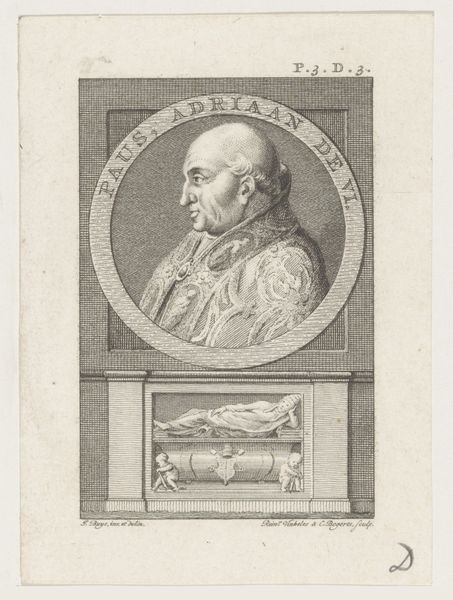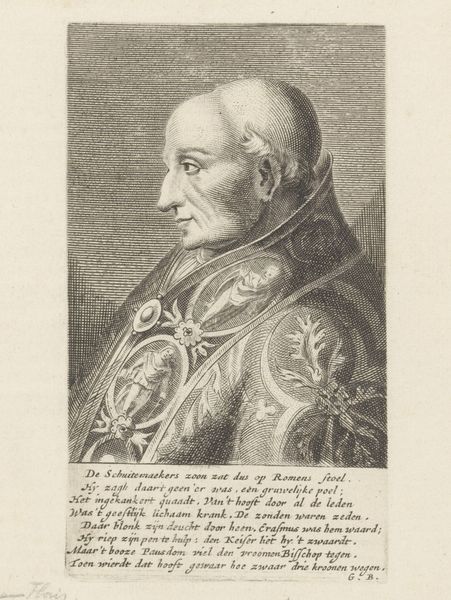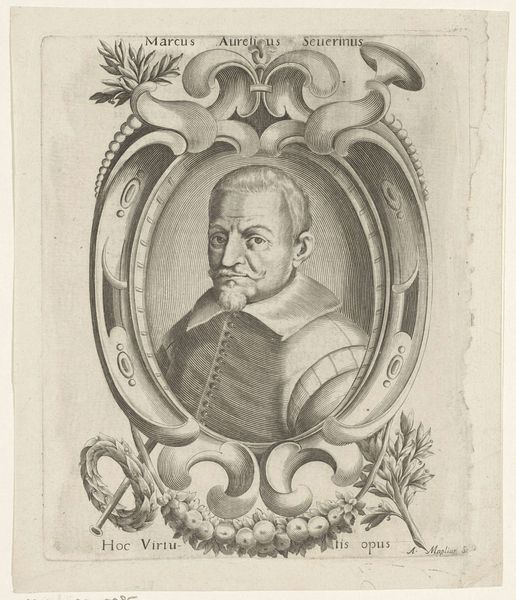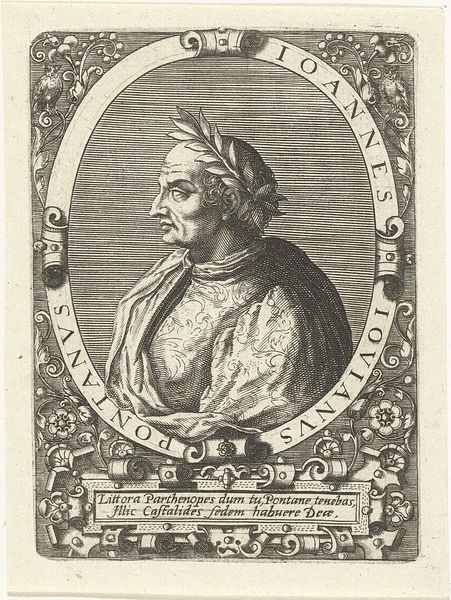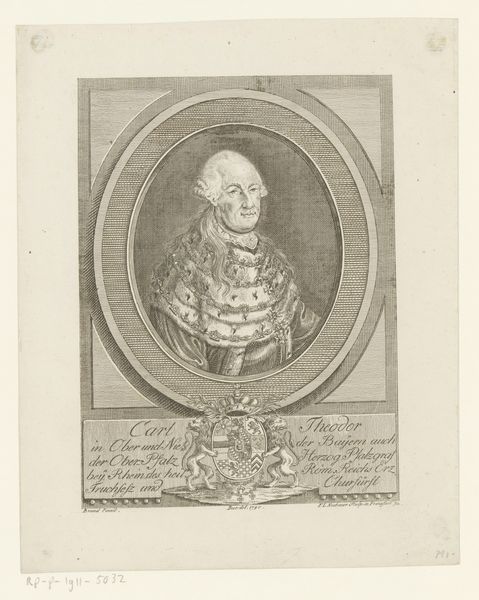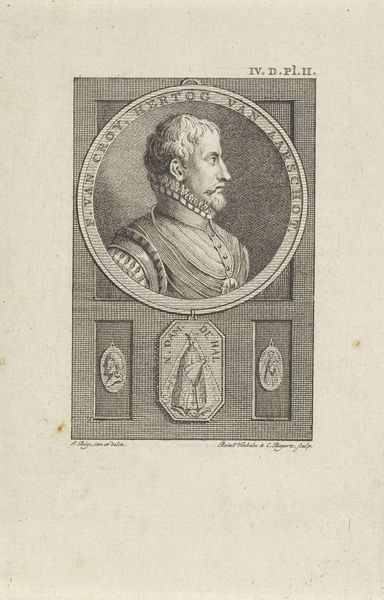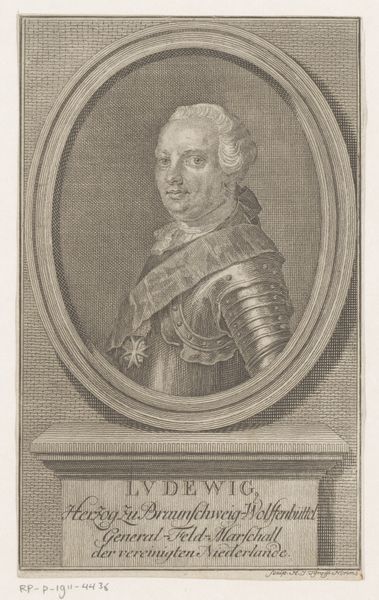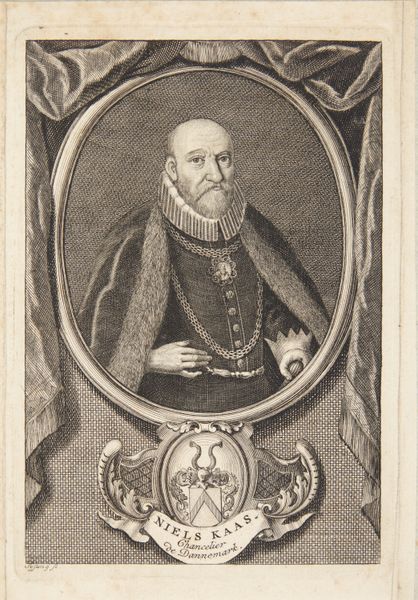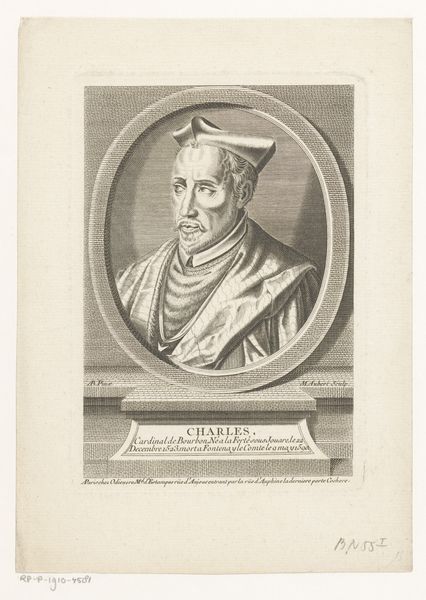
print, engraving
#
portrait
#
baroque
# print
#
old engraving style
#
historical photography
#
portrait reference
#
history-painting
#
engraving
Dimensions: height 182 mm, width 125 mm
Copyright: Rijks Museum: Open Domain
Editor: So this is Jan Lamsvelt's "Portret van paus Adrianus VI," made sometime between 1696 and 1743. It's an engraving, so a print. The level of detail is quite incredible given the medium! What compositional elements strike you? Curator: The visual structure hinges upon a calculated contrast. Consider the oval wreath: its circular form, replete with uniformly patterned leaves, provides a visual buffer for the severe, linear construction of the plinth below. This juxtaposition channels the gaze. Editor: Yes, I see that now. The soft, organic frame contrasts with the rigid lines of the base, drawing the eye upwards to the portrait. Curator: Precisely. Furthermore, observe how Lamsvelt manipulates light and shadow to sculpt Adrianus's face. Note the etching technique to give weight and texture. Ask yourself, does the engraving accomplish visual interest in the patterns and lines? Editor: Definitely! The hatching and cross-hatching create a range of tonal values, giving depth to the face and robes. The floral details are sharply in focus compared to the man. It feels very Baroque in its intensity and detail. The gaze follows a clockwise, ascending composition through all the forms: block, portrait, wreath, then empty background space before settling down on the next. Curator: And within that intensity, consider how line becomes form and value; that cross-hatching constructs the illusion of three-dimensionality, lending weight and presence to the figure. One may interpret the textures to highlight details that are not really there! The success and ingenuity in a work is when what is absent provides a presence, what is an illusion has weight. Editor: It’s amazing to consider how the interplay of simple lines, strategically employed, creates such a compelling image and directs how to interpret its various elements, regardless of their realism. Curator: Indeed. And ultimately, that is how visual expression generates affect, inviting a closer look to begin with.
Comments
No comments
Be the first to comment and join the conversation on the ultimate creative platform.

